方案详情文
智能文字提取功能测试中
Abstract for the 19th LISBON Laser Symposium Two colors LIF techniques applied on tow jets mixingflows challenges and experimental program on a complexmock-up M. Chitt, B. Cariteau, D. Guenadou, G. Ricciardi, L. Rossi To cite this version: M. Chitt, B. Cariteau, D. Guenadou, G. Ricciardi, L. Rossi. Two colors LIF techniques applied ontow jets mixing flows challenges and experimental program on a complex mock-up. 19th InternationalSymposium on Applications of Laser and Imaging Techniques to Fluid Mechanics, Jul 2018, Lisbonne,Portugal. hal-02415317 HAL Id: hal-02415317https://hal.archives-ouvertes.fr/hal-02415317 Submitted on 17 Dec 2019 HAL isa multi-disciplinary openaccessarchive for the deposit and dissemination of sci-entific research documents, whether they are pub-lished or not.The documents may come fromteaching and research institutions in France orabroad, or from public or private research centers. )-S L'archive ouverte pluridisciplinaire HAL, estdestinee au depot et a la diffusion de documentsscientifiques de niveau recherche, publies ou non,emanant des etablissements d'enseignement et derecherche francais ou etrangers, des laboratoirespublics ou prives. Two color LIF techniques applied on a two jets mixing flow:Challenges and experimental program on a complex mock up M. CHITT, B. CARITEAU2, D. GUENADOU 1, G.RICCIARDI1, L. ROSSI1 1 CEA Cadarache,DEN,DTN\STCP\LTHC, 13115 Saint-Paul-lez-Durance, France. mira.chitt@cea.fr david.guenadou@cea.fr guillaume.ricciardi@cea.fr lionel.rossi@cea.frCEA Saclay,DEN,DM2S\STMF\LIEFT, 91191 Gif-sur-Yvette Cedex, France. benjamin.cariteau@cea.fr There is no doubt that energy has been driving and will drive the technological progress of thehuman civilization. It has been projected that the energy demand will almost double by the year2040 (based on 2010 energy usage), which must be met by utilizing the energy sources other thanthe fossil fuels such as coal and oil. Thus many countries realized the importance of clean nuclear energy due to its sustainability andusage in power generation with less contribution to greenhouse gas emissions when compared tofossil fuel power generation [1]. The nuclear power industry has been developing and improvingreactor technology for more than six decades which lead to several generations of nuclear reactors. Nowadays,Generation IV reactors present the futuristic reactors for which research anddevelopment efforts are currently in progress. These reactors will be more efficient, safer and longerlasting(60 years and beyond). Six reactor designs were selected at the outset. They differ in terms ofreactor spectrum (either fast or thermal spectrum), coolants, and approximate core outlettemperatures. Regarding nuclear power in France, it is the largest source of electricity in the country with ageneration of 416.8 TWh (terawatt hours), or 76.3% of the country's total production of 546 TWh,the highest percentage in the world. The country has been very active in developing nucleartechnology and nowadays a new project of construction of a 4h generation prototype reactor cooledby sodium is being studied to support Generation IV deployment in the middle of the century.The reactor is named ASTRID, Advanced Sodium Technological Reactor for Industrial Demonstrationand it is a 600MWe pool type reactor which intends to be an industrial demonstration. This concept includes French and International feedbacks and main advances on the safety andoperative point of view. CEA is the leader of this project involving many partners (EDF, AREVA, BOUYGUES,...). The designintegrates not only the know-how and the feedback of the previous French SFR (PHOENIX,SUPER-PHOENIX) but also the cutting edge technologies. Figure 1 is a sketch of the actual design of ASTRID. The sodium flows from the external vessel to theupper plenum through the core where it is heated. Around 90% of the sodium ejected from the coreis deviated by the Upper Core Structure (UCS) to the upper plenum. The other part flows across theUCS, then to the upper plenum. The hot sodium (550℃) of the upper plenum enters inside theIntermediate Heat Exchangers (IHX) to heat a secondary sodium circuit. This latter is connected to asteam generator. This scheme avoids the primary sodium to be in contact with water in case ofleakage. The outlet of the IHX is connected to the external vessel where the sodium is pumped andsent back to the core [2]. Figure 1: Cut view of the ASTRID primary circuit There are thermal-hydraulics issues of upper plenum of the sodium cooled reactor ASTRID whichcannot be studied from past reactors feedback and numerical simulations since the calculation codesdo not allow to model these problems with sufficient confidence. Thus in order to validate thenumerical approaches and systems concept of ASTRID to fit the codes and simulations for validationand to better understand the complex thermal hydraulic phenomena in order to qualify the designoptions, we need to investigate temperature and velocity in this complex geometry. For thesereasons,a prototype is needed to study the thermal hydraulic behavior of the ASTRID reactor. Sodium experiments are very complicated to perform since sodium is opaque and reacts violentlywith water, thus it was more useful to perform measurements on a water model. In addition to this,sodium and water have similar properties in terms of viscosity and density as shown in the tablebelow: Physical properties Density(kg/m) Viscosity (*104Pa.s) Sodium at 550°C 823 2.2 Water at 60°C 983 4.7 Also, a dimensional analysis was done regarding the physical properties between sodium and waterso as to get a similitude between ASTRID and the model. In this study, a dimensionless quantity X*was defined by the ratio between the variables of the mockup and ASTRID, that isX*=Xmock-up/XASTRID. Richardson number was used to study the thermal flow aspects, thus all theparameters characterizing the flow (Re,Q, ..) can be calculated by setting Ri*=1. From what preceded, the MICAS model was designed. The MICAS mock up is a water model ofASTRID, made up of PMMA (Poly methyl methacrylate) for optical measurements, about 2.5 mdiameter and 1.7 m height and a scale of around 1/6. Figure 2 shows a cross view of the MICASmock-up and figure 3 a top view of the model. The core is supplied by two different watertemperatures: a hot one in the central zone and a cold one in the outer areas. This mock up is builtto study several issues such as thermal behavior between the hot and the cold jets. Those will beinvestigated using optical measurements since they are non-intrusive. Figure 2: Cross-view of the MICAS mock-up Figure 3: Top view of MICAS mock-up One challenge is to implement non-intrusive optical techniques to simultaneously measuretemperature and velocity on complex geometry featured by the MICAS Mock up. There exist severaloptical methods for temperature measurement and the best to be used in our case is Laser InducedFluorescence (LIF) since it is a quantitative, non-intrusive technique used in liquid flows and givesprecise results. In all forms of LIF, a laser is used to excite a fluorescent species within the flow.Typically, the tracer is an organic fluorescent dye such as fluorescein or rhodamine. The dye absorbsa portion of the excitation energy and spontaneously re-emits a portion of the absorbed energy asfluorescence [3]. The fluorescence is measured optically and used to infer the local concentration ofthe dye. The fluorescence intensity F at a specified point is defined as equation 1. F=IopeC (2) where lo is the incident light flux, o is the quantum efficiency, e is an absorption coefficient, b is thethickness of the laser sheet and C is the concentration of the dye solution. Thus, a linear equation isobtained when the product ebC is small as seen in equation 2. A dye is a necessary component of LIF.The suitability of a dye is based on an absorption spectrum that is compatible with the laserexcitation wavelength. The fluorescent tracer must be water-soluble with high quantum efficiency sothat signal strength is maximized. It must exhibit enough temperature dependence over a suitabletemperature range and must be photo-stable under experimental conditions that yield detectableemission. Plus, the absorption and emission of the dye must be spectrally separable.Regarding thetypes of LIF technique, there exist three main methods focusing on the dyes used. One color LIFtechnique is the method in which one single fluorescent dye and one spectral band of detection areused. In general, the linearity of the fluorescence signal with respect to the incident laser energy anddye concentration is reported. Such experiments were the first to be conducted in the temperaturemeasurement field. From these experiments, researchers were able to identify the characteristics ofthe organic dyes such as the excitation wavelength, temperature dependent emission percentageand temperature range [4]. However, this method exhibits several constraints. For instance, theincident laser intensity must be maintained constant during the experiment. This introducessystematic errors in the temperature measurements when a pulsed excitation is used. Also, an initialreference image taken under constant concentration and temperature conditions must be used fornormalization since the energy distribution in the laser sheet is not uniform. Thus alternativetechniques have been developed. In the two color two dye LIF techniques, the temperature is determined from the ratio of the signalof two dyes, which have highly different temperature sensitivities [5]. That is one of the dyes shouldbe sensitive to temperature and the other should not or only very weakly. This technique eliminatesBeer’s absorption as well as the laser intensity dependence. The two-color one dye laser-induced fluorescence technique uses a single fluorescent tracer and twospectral bands of detection [6]. Here, the ratio of the fluorescence signal measured on the twospectral bands depends only on temperature and solves the problem of the dependence on theconcentration, since a single dye associated with two spectral bands and two different temperaturesensitivities is used. The technique is perfectly suitable for measuring the temperature of droplets[7]. Nowadays this method is being highly used in the two-phase applications (droplets,..). In our experiments and from what has preceded, single dye and two dye two color LIF techniquesseem very appealing since in addition to the accuracy of these techniques, it is also interesting tomake comparison between the results of each one. Starting from this point, experiments regardingone color LIF were carried out. The main goal of these experiments was to perform calibration in a way to study the fluorescenceresponse of three dyes: Classical Fluorescein, FL27 and RH6G as function of three main parameters:dye concentration,laser power and temperature variation. Classical fluorescein, FL27 and Rh6G were found to be widely used in literature when performingsuch experiments and the issue always remains to improve temperature sensitivity. The dyes were inpowder form so in order to prepare a homogeneous solution, a concentrated one is prepared at firstfor each dye, then it is diluted several times to get the required range of concentration needed forthe study. A LaVision's Imager sCMOS camera and a continuous 532 nm green argon laser with an output powerranging between 2 to 8W were used as shown in figure 4. Figure 4: set up of LIF Regarding optics, two band pass filters were used: the first 570nm for Rh6G and the second 520nmfor classical FL and FL27. Also, two mirrors were put in position to best enhance laser pathway. Thenstudies were done on each dye at room temperature and ambient conditions by varying theconcentration of each and testing the response as function of laser intensity too. Then after gettingthe range of dye concentration in which the linearity between the fluorescence response andconcentration exists, certain values are chosen to again test the fluorescence response as function oflaser power and then as function of temperature variation each at a certain power intensity. In what follows are some results of preliminary experiments done with analysis concerning eachparameter. Figure 5: Fluorescence response as function of dye concentration for FL27 Fluorescence response Dye concentration g/L Figure 6: Fluorescence response as function of dye concentration for Rh6G Regarding the organic dyes FL27 and Rh6G, a linear approach of fluorescence response can beviewed when the concentration of the dyes varies between 0,0006 and 0,0025 g/L for FL27 andbetween 2*10-5 and6*10-5 g/L for Rh6G. Thus this defines the domain of interest regardingconcentration of organic dyes to be used later in future experiments. In general, fluorescenceresponse increases with the increase in concentration because absorption of the laser along thecuvette becomes important. Then other experiments were done by varying the laser intensity too from 2 till 8 W. Figure 7: Variation of fluorescence response as function of laser power for FL27 As the dye concentration increases, the response of the emitted fluorescence increases with respectto incident laser power. Other experiments were performed to study the fluorescence response of dyes FL 27 and RH6G asfunction of temperature variation. FL 27 Figure 8:Variation of fluorescence response as function of temperature for FL27 and Rh6G Regarding FL27, A count increases with increase in dye concentration and fluorescence responseincreases with increase in temperature. The temperature sensitivity is estimated 1.6%/C, a valuealmost similar to that found in literature and as for Rh6G, A count decreases very slowly with theincrease in temperature. The temperature sensitivity is estimated -0,075%/℃[8]. Here, the ratiobetween the fluorescence responses eliminates the influence of the laser intensity. Thus thetemperature sensitivity of the dye is not affected by the laser irradiance. For the coming steps, two color one dye LIF technique will be carried out using FL 27 (temperaturedependent dye) and Rh6G (temperature insensitive dye), each of concentration belonging to therange found by the experiments done and with a laser power giving an approximate linearity relationbetween the fluorescence response and temperature variation. As the MICAS Mock-up exhibits complex mixing flows, a first simple step experiment was designed tostudy such configurations. The objective of this experiment is to design a representative prototypefrom the point of view of the dimensional analysis of the thermal hydraulics (jet flow, plumes,buoyancy,...) of the core of the MICAS model. For this fact, the mixture of the two jets of differenttemperatures must be studied. The first jet is being hot and the second cold such as the case in theMICAS mock-up and then optical methods for measuring temperature (LIF) and velocity (PIV)simultaneously will be applied on the prototype. The prototype aims to study the interactionbetween two jets at different temperatures and these can be vertical or horizontal. In this study,three main dimensionless values will be studied, Reynold's number, Richardson number and Froudenumber. The flow in one jet will be laminar and in the second turbulent and then by changing theflow rate of each jet, several cases will be studied such as the interaction between a fountain and ajet, buoyant plumes in a turbulent environment,... and these studies will be achieved by the variationof Richardson number through changing the distance separating the two jets which is a main factorhere. Another challenge exists in the application of LIF and PIV simultaneously on this test section.For this reason, the characterization system requires two perpendicular transparent faces. Theprototype consists of a tank having transparent walls for optical access which allows theimplementation of LIF and PIV simultaneously. It is connected to a hydraulic loop consisting of threetanks. The configuration and all the details of the test section can be shown in figure 9. Figure 9: 3D view of main test section The last step will be the application of LIF and PIV on the complex geometry MICAS Mockup afterprofiting from the data collected and experiences acquired from previous stages. References: [1] K. Linga Murty and Indrajit Charit,“Overview of Nuclear Reactor Systems and Fundamentals", An Introduction toNuclear Materials: Fundamentals and Applications, First Edition, Wiley-VCH Verlag GmbH & Co. KGaA, 2013. [2] D. GUENADOU,I. TKATSHENKO,P. AUBERT,“Plateau Facility in Support to Astrid and the SFR Program: An Overview ofthe First Mock-Up of the Astrid Upper Plenum, Micas", Proceeding of Nureth 16, Chicago, August 30-September 4, 2015. [3] P. Crimaldi,“Planar laser induced fluorescence in aqueous flows", Experiments in Fluids, Vol. 44, Issue 6, pp. 851-863,June 2008. [4] J. Sutton, B. Fisher and J. Fleming, “A laser induced fluorescence measurement for aqueous fluid flows withimproved temperature sensitivity",Experiments in Fluids, Vol.45, pp.869-881, Nov 2008. [5] J. Copetta and C. Rogers “Dual emission laser induced fluorescence for direct planar scalar behaviormeasurements", Experiments in Fluids, Vol. 25,Issue 1, pp. 1-15, June 1998. [6] P. Lavieille, F. Lemoine, M. Lebouche and G. Lavergne,“Evaporating and combusting droplet temperaturemeasurement using two colors laser-induced fluorescence", Experiments in Fluids, Vol. 31, pp. 45-55, 2001. [7] V.Depredurand, P.Miron, A. Labergue, M. Wolff, G. Castanet, et al.“A temperature-sensitive tracer suitable for two-colour laser-induced fluorescence thermometry applied to evaporating fuel droplets", Measurement Science andTechnology, IOP Publishing, Vol. 19, pp. 105-403,2008. [8] J.Sakakibara R.J Adrian,“Whole field measurement of temperature in water using two color LIF", Experiments inFluids, Vol. 26, Issue 1-2, pp. 7-15,January 1999. There are thermal hydraulics issues of upper plenum of sodium cooled reactor ASTRID which can not be studied from past reactors feedback and numerical simulations since the calculation codes do not allow to model these problems with sufficient confidence. Thus in order to validate the numerical approaches and systems concept of ASTRID to fit the codes and simulations for validation and to better understand the complex thermal hydraulicphenomena in order to qualify the design options, we need to invetsigate temperature and velocity in this complex geometry. Laser Induced Fluorescence and Particle Image Velocimetry are optical methods used to measure temperature and velocity respectively. In all forms of LIF, a laser is used to excite fluorescent species within the flow. Typically, the tracer, an organic fluorescent dye such as Fluorescein or Rhodamine, absorbs a portion of theexcitation energy and spontaneously re-emits a portion of the absorbed energy as fluorescence. In our experiments, single dye and two color LIF techniques are used to perform calibrations to study the fluorescence response of the dyes as function of main parameters: dye concentration, laser power, and temperature variation. Regarding PIV, the fluid is seeded with tracer particles then illuminated so that the particles are visible. The motion of the seeding particles is used to calculate velocity and direction of the flow being used. An experiment representative of the mixing flows in the MICAS mock up made up of two jets was designed to develop the LIF and PIV measurement process. The first jet is hot and the second cold, then optical methods for measuring simultaneously temperature by LIF and velocity by PIV is applied on the mock up. The interaction between the two jets at different temperatures and different configurations is studied regarding main dimensionlessvalues such as Reynold's number, Richardson number and Froude number.
关闭-
1/9

-
2/9
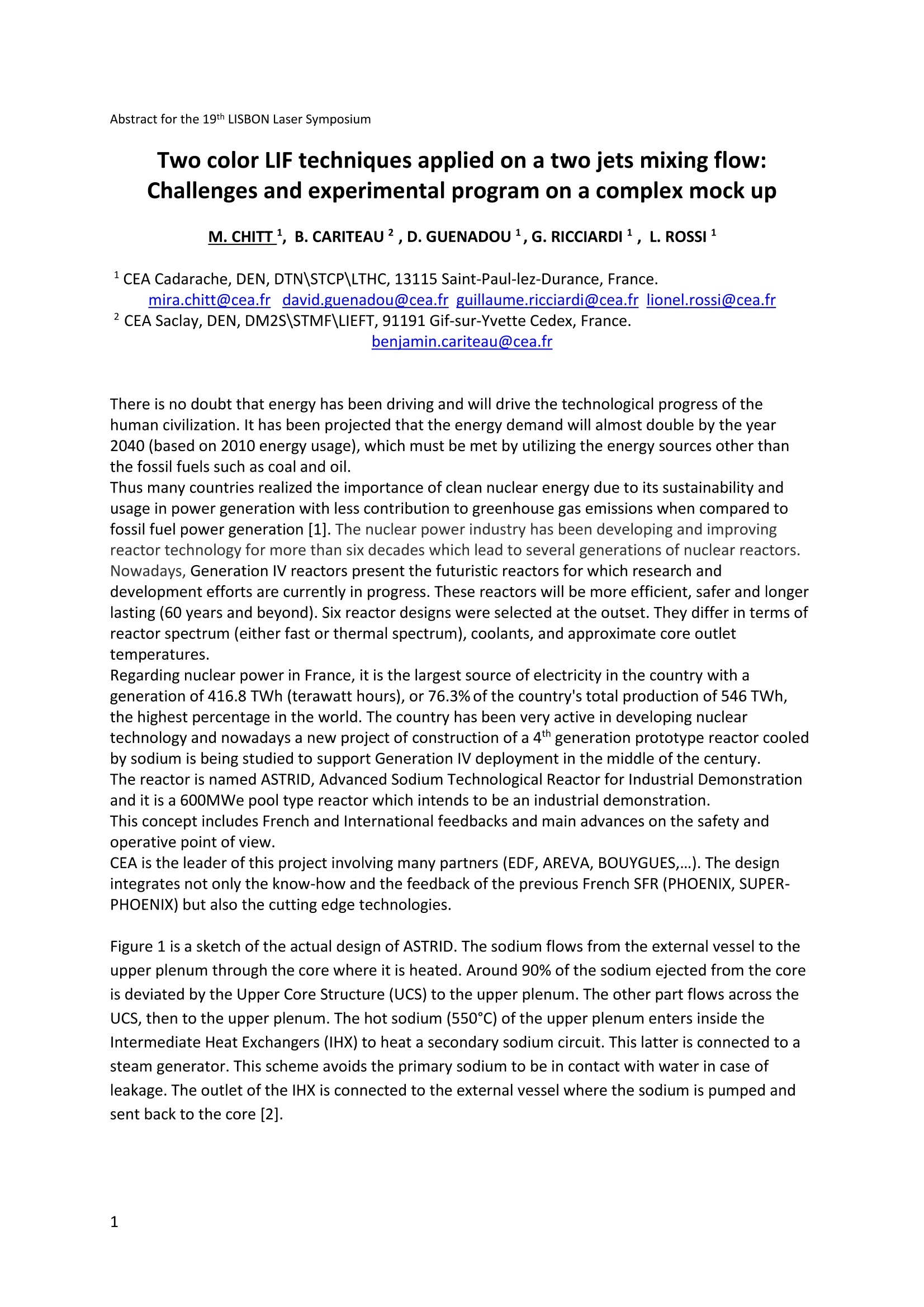
还剩7页未读,是否继续阅读?
继续免费阅读全文产品配置单
北京欧兰科技发展有限公司为您提供《双射流混合流中速度场,温度场检测方案(粒子图像测速)》,该方案主要用于其他中速度场,温度场检测,参考标准《暂无》,《双射流混合流中速度场,温度场检测方案(粒子图像测速)》用到的仪器有德国LaVision PIV/PLIF粒子成像测速场仪、PLIF平面激光诱导荧光火焰燃烧检测系统、液体混合过程分析测试系统、Imager sCMOS PIV相机、LaVision DaVis 智能成像软件平台。
我要纠错
推荐专场
CCD相机/影像CCD
更多相关方案




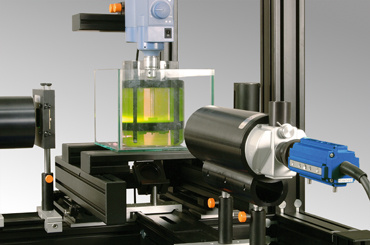
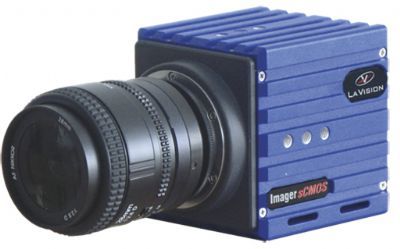
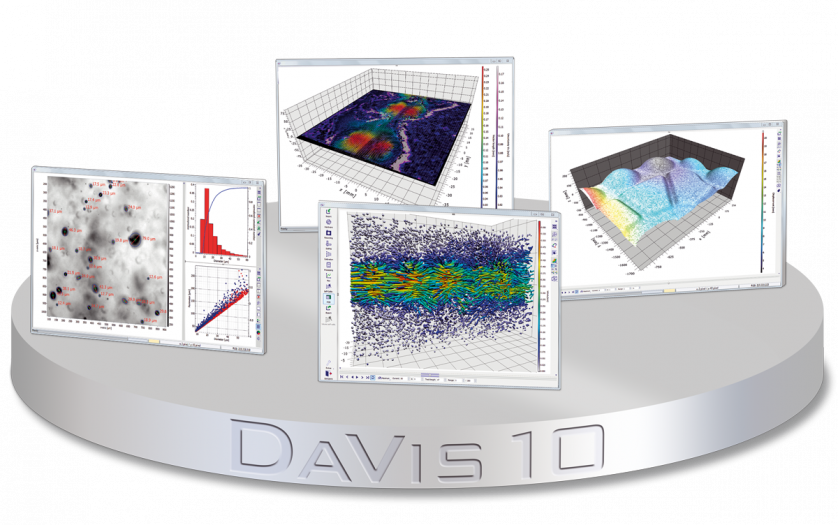





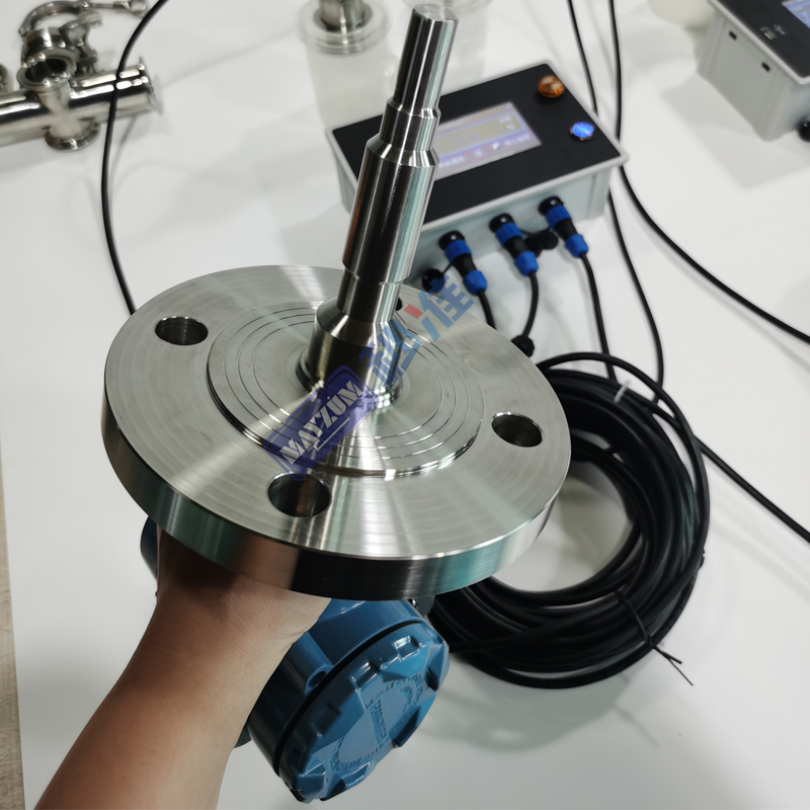
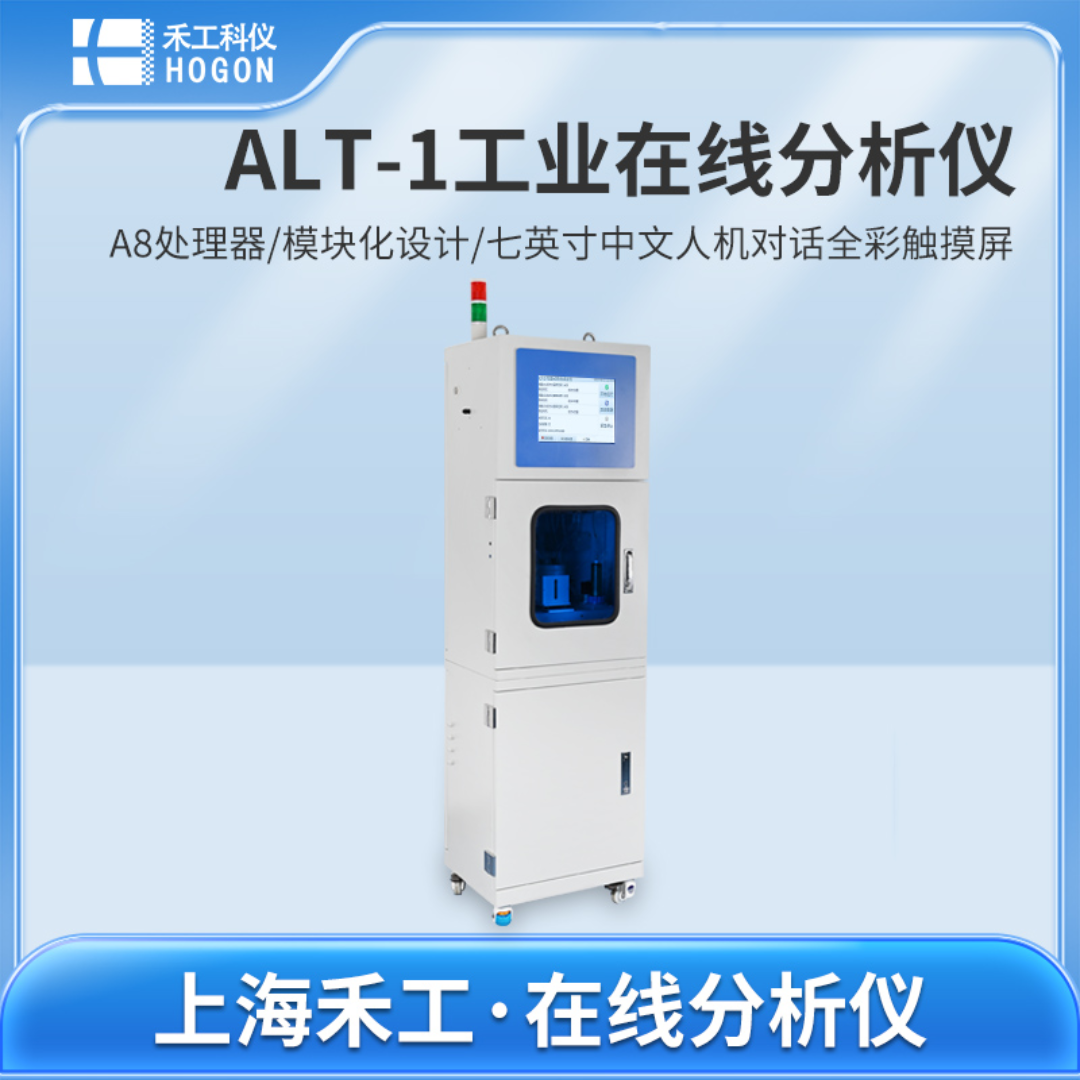







 咨询
咨询